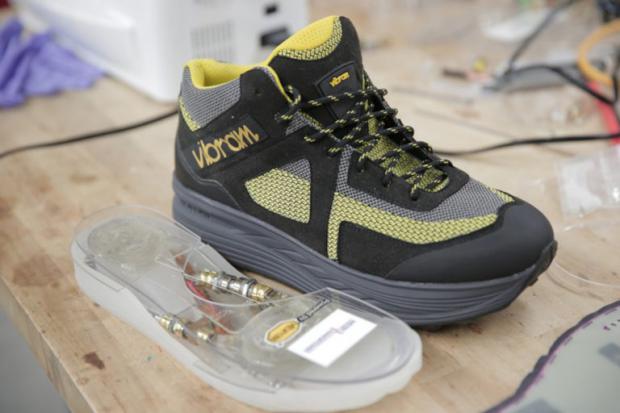
Breaking News
 Chinese Cargo Ship Converted Into Concealable Missile Destroyer
Chinese Cargo Ship Converted Into Concealable Missile Destroyer
 ADL Goes Ballistic After Megyn Kelly Says Bari Weiss, Ben Shapiro Are 'Making Antisemites'
ADL Goes Ballistic After Megyn Kelly Says Bari Weiss, Ben Shapiro Are 'Making Antisemites'
 Stockman: The Real Story Behind The Russia–Ukraine War... And What Happens Next
Stockman: The Real Story Behind The Russia–Ukraine War... And What Happens Next
 "Common Sense" Is Back: UK Finally Scraps Non-Crime Hate Incident Laws Nationwide
"Common Sense" Is Back: UK Finally Scraps Non-Crime Hate Incident Laws Nationwide
Top Tech News
 EngineAI T800: Born to Disrupt! #EngineAI #robotics #newtechnology #newproduct
EngineAI T800: Born to Disrupt! #EngineAI #robotics #newtechnology #newproduct
 This Silicon Anode Breakthrough Could Mark A Turning Point For EV Batteries [Update]
This Silicon Anode Breakthrough Could Mark A Turning Point For EV Batteries [Update]
 Travel gadget promises to dry and iron your clothes – totally hands-free
Travel gadget promises to dry and iron your clothes – totally hands-free
 Perfect Aircrete, Kitchen Ingredients.
Perfect Aircrete, Kitchen Ingredients.
 Futuristic pixel-raising display lets you feel what's onscreen
Futuristic pixel-raising display lets you feel what's onscreen
 Cutting-Edge Facility Generates Pure Water and Hydrogen Fuel from Seawater for Mere Pennies
Cutting-Edge Facility Generates Pure Water and Hydrogen Fuel from Seawater for Mere Pennies
 This tiny dev board is packed with features for ambitious makers
This tiny dev board is packed with features for ambitious makers
 Scientists Discover Gel to Regrow Tooth Enamel
Scientists Discover Gel to Regrow Tooth Enamel
 Vitamin C and Dandelion Root Killing Cancer Cells -- as Former CDC Director Calls for COVID-19...
Vitamin C and Dandelion Root Killing Cancer Cells -- as Former CDC Director Calls for COVID-19...
 Galactic Brain: US firm plans space-based data centers, power grid to challenge China
Galactic Brain: US firm plans space-based data centers, power grid to challenge China
New Technology Allows Human Activity To Generate Renewable Energy

A revelation in sustainable energy has just been discovered which means that people could soon be generating electricity through the act of walking. A team of engineers at the University of Wisconsin-Madison have recently developed a unique flooring made of entirely renewable and economical material, which creates energy through footsteps. Similarly to this, another group of mechanical engineers at the university had developed a technology which allows energy to be generated through a pair of shoes.
Xudong Wang, who is the lead researcher of the project, believes that his new technology could revolutionize the way that people approach energy. He created his innovative technology using common waste materials, including wood pulp made of cellulose nanofibers which are very inexpensive, renewable, and often retrieved from waste products of industries. This creates an electrical charge when the chemically treated fibers come into contact with untreated fibers. As the nanofibres are put into the flooring, energy is produced which can be used for lighting or even to charge batteries.
The science and innovation website Grendz commented on the clean energy discovery by saying,
"Wang's research centers around using vibration to generate electricity. For years, he has been testing different materials in an effort to maximize the merits of a technology called a triboelectric nanogenerator (TENG). Triboelectricity is the same phenomenon that produces static electricity on clothing. Chemically treated cellulose nanofibers are a simple, low-cost and effective alternative for harnessing this broadly existing mechanical energy source."
This new technology could even rival wind and solar energy as it does not need to rely on specific weather conditions. Researchers have also suggested that there is more potential for this sustainable energy than the current fossil fuel reserves. Wang said, "Roadside energy harvesting requires thinking about the places where there is abundant energy we could be harvesting. We've been working a lot on harvesting energy from human activities. One way is to build something to put on people, and another way is to build something that has constant access to people. The ground is the most-used place



